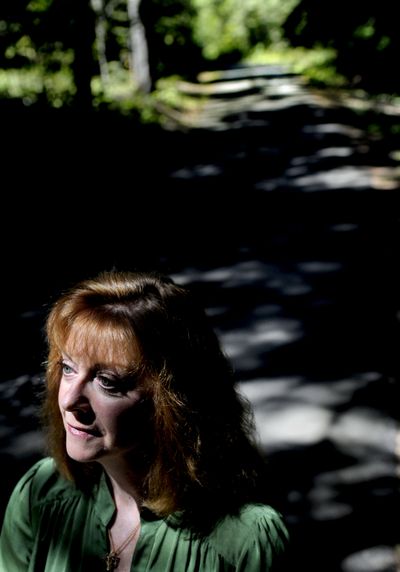Preserving urban farmland
Spokane wants to buy Latah Valley tract

The city of Spokane is looking at the possibility of buying development rights to an unusual use of land in an urban area – farming.
A handful of farmers still work the soil in Latah Valley, and city officials said the use of the land for agriculture is so valuable that the government should take steps to preserve it.
Farmland in the valley has been lost to development over the years.
Spokane City Council last Monday approved a grant application seeking half of the funding to purchase development rights for 19.5 acres of farmland with an assessed value of $847,000.
Council approved a separate application for funding to purchase 27.5 acres of adjacent land along Latah Creek with an assessed value of $98,100.
In both cases, the grants would pay for half of the acquisition cost.
Marla French, of the city planning staff, said money for acquiring farmland rights is a relatively new program in the state but is being used increasingly by West Side counties to preserve critical growing areas close to population centers.
Maintaining farmland is increasingly seen as a way to create greater food self-sufficiency within communities and reduce transportation costs. If existing farm operations were to stop, the city could make the land available for community agriculture or community gardens.
None of the land rights could be purchased without the agreement of the owners, she said.
Mike Prager
One good-looking lake
Coeur d’Alene native Mary Skerrett spent 12 years in Los Angeles with thoughts of her hometown circling in her mind. Two years ago she wanted to buy a map of Lake Coeur d’Alene to show her L.A. friends. She couldn’t find one.
“What were available were the boating maps with all the lake depths and details,” she said. While those were great for utilitarian purposes, Skerrett, 36, wanted a simple, clean look that would connect people to a place.
So she decided to make her own. Actually, she decided to find someone artistic to create it. She called longtime friend Chris Pfeiffer, who was living in Portland at the time.
Pfeiffer, a stranger to cartography but a 10-year graphic designer, began researching.
“I basically started looking at everything from Google maps to USGS maps that they have for all sorts of geographical purposes,” said Pfeiffer, 38. “I pulled everything I could from all of that and said, ‘Here’s the shell of the lake. Let’s draw the shoreline using all of these points of reference.’ Once we had the shoreline drawn, then it gets fun. That’s the hard part. Once that’s done then you decide what the spirit of it is.”
The duo had to decide whether to capture Lake Coeur d’Alene as it was in the golden era of resort towns or how it is today. While they wanted to keep the map historically accurate for old-timers, they also had to consider bays that were renamed or are well-known by a nickname.
Skerrett said people’s reaction to the maps is powerful.
“It’s amazing to watch people get lost in it,” she said. “They’re checking to see if their place is on there. You start seeing them remember, ‘Oh, we had a cabin there.’ And they spend five minutes telling stories about different places. It’s great.”
Three months ago Skerrett decided to devote all of her time to the map company, named Theme Two.
The Theme Two map collection, which appears on professional grade parchment paper, stretch canvas and vintage wood, includes Lake Pend Oreille, Hayden Lake, Flathead Lake, Priest Lake, Lake Washington, Lake Chelan and Lake Tahoe.
Carley Dryden
Faith in mysteries
Call it creative license.
Brandilyn Collins got rid of the mountains between Spirit Lake and Priest River and dropped a body of water and a community there: Kanner Lake, a town like Spirit Lake, population 1,700, only with a higher murder rate.
“Kanner Lake is fictional,” Collins said, “but everything around it – the roads, the towns – are real.”
Local readers of the Christian suspense novelist’s four-book series will be familiar with many of the places mentioned.
In one, a car chase leads into Spokane. A downtown Coeur d’Alene gift shop – Simple Pleasures – gets a mention. Kanner Lake is west of the nonfiction Spirit Lake Cutoff Road.
Collins splits her time between California and North Idaho.
Her most recent release, “Amber Morn,” begins with a group of bloggers taken hostage at Kanner Lake’s Java Joint.
Sometimes her books have a body count by the end of the first chapter. Every chapter has a hook on the end.
All are “Christian novels,” she said. Some ask Collins how she can write murder into a Christian novel.
“It’s not the Christian fiction you heard of 10 years ago,” she said. Though the books “are not heavy on Christian content,” Collins said there’s an element of hope and faith in each.
She promises readers will get their fix of suspense and mystery without sex scenes and four-letter words.
Though Collins isn’t planning any more books in the Kanner Lake series, the author of 19 novels said she could return to North Idaho in future novels.
She describes it as “just about the closest you can get to heaven on this earth.”
Taryn Hecker